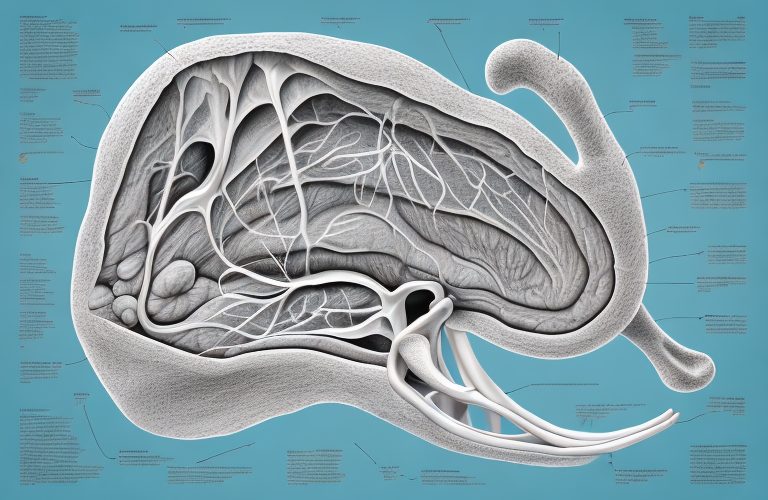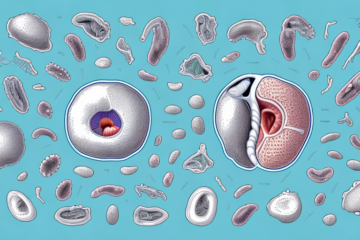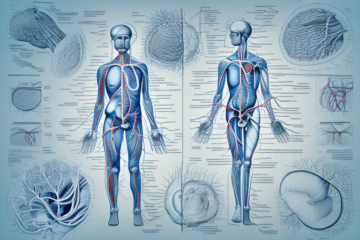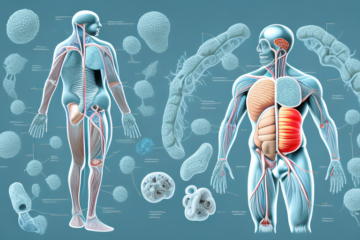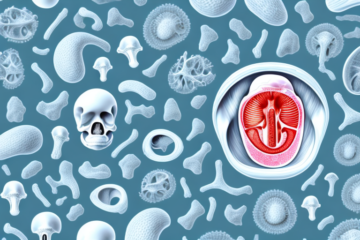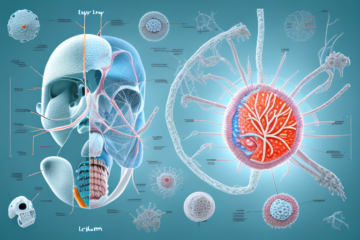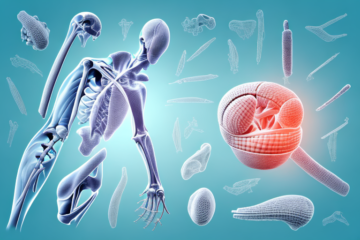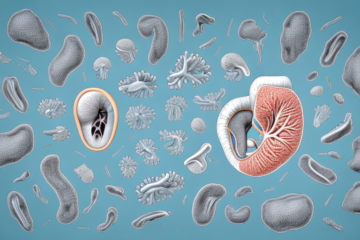For the longest time, the mesentery was considered nothing more than a series of fragments within the intestines. However, new research in recent years has revealed that the mesentery is actually a single, continuous organ. This discovery has sparked renewed interest in the mesentery, and scientists are now looking to uncover its many secrets. In this article, we will explore the function, anatomy, history, and role of the mesentery in the body.
Understanding the Mesentery: Definition and Overview
The mesentery is a thin sheet of connective tissue that attaches the intestines to the abdominal wall. It is a complex structure that serves many different functions, including nutrient absorption, immune defense, and support for the intestinal walls. It comprises both blood vessels and lymphatic vessels, and plays a critical role in the body’s overall digestive process. The mesentery has been identified in all vertebrates, and is therefore essential for life on earth.
Recent research has shown that the mesentery may also play a role in the development of certain diseases, such as Crohn’s disease and colorectal cancer. Understanding the structure and function of the mesentery may lead to new treatments and therapies for these conditions. Additionally, advances in medical imaging technology have allowed for better visualization and study of the mesentery, leading to a deeper understanding of its importance in the human body.
The History of the Discovery of the Mesentery
The mesentery was first described in detail by Leonardo da Vinci in the 16th century. However, it was not until the 19th century that its importance was fully recognized. It was during this time that scientists began to realize that the mesentery was not just a collection of fragments, but was actually a single, continuous organ. This discovery paved the way for further research into the function and anatomy of the mesentery.
Further studies on the mesentery revealed that it plays a crucial role in the digestive system. It connects the intestines to the abdominal wall and provides support and stability to the organs in the abdominal cavity. The mesentery also contains blood vessels, lymph nodes, and nerves that are essential for the proper functioning of the digestive system.
In recent years, there has been growing interest in the mesentery due to its potential role in the development of diseases such as Crohn’s disease and colon cancer. Researchers are now exploring the possibility of using the mesentery as a target for new therapies and treatments for these conditions.
The Anatomy of the Mesentery: A Detailed Look
The mesentery is an intricate network of blood vessels, lymphatic vessels, and connective tissue. It is made up of two layers: the outer layer, which attaches to the abdominal wall, and the inner layer, which encloses the intestines. The mesentery is responsible for supplying blood and nutrients to the intestines, and it also plays a critical role in removing waste products from the body.
Recent research has shown that the mesentery may have a more significant role in the body than previously thought. It has been discovered that the mesentery is not just a passive structure that supports the intestines, but it also has an active role in regulating the immune system. The mesentery contains a large number of immune cells, which help to protect the body from harmful pathogens and infections. This new understanding of the mesentery’s function has opened up new avenues for research and potential treatments for immune-related diseases.
The Functions of the Mesentery in Digestion and Absorption
The mesentery is an essential component of the digestive system. It plays a critical role in the absorption of nutrients from the food we eat. The mesentery also contains lymphatic vessels, which are responsible for transporting fat molecules from the intestines to other parts of the body where they can be used for energy.
In addition to its role in digestion and absorption, recent research has suggested that the mesentery may also play a role in the immune system. Studies have shown that the mesentery contains a large number of immune cells, including T cells and B cells, which are important for fighting off infections and diseases. This discovery has led to further investigation into the potential therapeutic uses of the mesentery in treating immune-related disorders.
The Role of the Mesentery in Immunity and Inflammation
The mesentery is also an important component of the immune system. It contains a large number of immune cells, including T-cells and B-cells. These cells are responsible for identifying and attacking foreign invaders, such as bacteria and viruses. The mesentery also plays a role in regulating inflammation in the body, helping to prevent the overreaction of the immune system that can lead to chronic diseases.
Recent studies have also shown that the mesentery plays a crucial role in the gut-brain axis, which is the communication network between the gut and the brain. The mesentery contains nerve fibers that connect to the enteric nervous system, which is sometimes referred to as the “second brain.” This connection allows the mesentery to influence gut motility, secretion, and sensation, as well as mood and behavior. Therefore, maintaining a healthy mesentery is not only important for immunity and inflammation but also for overall gut and brain health.
Diseases and Disorders that Affect the Mesentery
While the mesentery is a vital component of the body, it can also be subject to diseases and disorders. Some of the common conditions that affect the mesentery include mesenteric ischemia, mesenteric lymphadenitis, and mesenteric panniculitis. These conditions can cause symptoms such as abdominal pain, diarrhea, and weight loss. Treatment varies depending on the specific condition, but may involve medication, diet changes, or surgery.
In addition to the aforementioned conditions, there are other diseases and disorders that can affect the mesentery. These include mesenteric cysts, mesenteric fibromatosis, and mesenteric lipodystrophy. Mesenteric cysts are fluid-filled sacs that can develop in the mesentery, while mesenteric fibromatosis is a rare condition where fibrous tissue grows in the mesentery. Mesenteric lipodystrophy is a condition where there is a loss of fat tissue in the mesentery, which can lead to abdominal pain and diarrhea. Treatment for these conditions may involve surgery to remove the affected tissue or cyst.
How to Keep Your Mesentery Healthy: Tips and Suggestions
Maintaining a healthy mesentery is vital for overall health and well-being. Some of the things you can do to keep your mesentery healthy include eating a healthy diet, getting regular exercise, and avoiding smoking and excessive alcohol consumption. You should also make sure to get regular check-ups with your doctor, particularly if you are experiencing any symptoms related to the mesentery.
In addition to these general tips, there are some specific things you can do to support the health of your mesentery. One of these is to incorporate more fiber into your diet, as this can help to reduce inflammation in the mesentery. You can do this by eating more fruits, vegetables, and whole grains.
Another way to support the health of your mesentery is to manage your stress levels. Chronic stress can lead to inflammation in the body, including in the mesentery. Some effective stress-management techniques include meditation, yoga, and deep breathing exercises.
Surgical Procedures Involving the Mesentery
Surgical procedures involving the mesentery are typically reserved for cases where other treatments have proven ineffective. These procedures may involve removing part or all of the mesentery, or repairing damaged blood vessels or lymphatic vessels. While these procedures can be risky, they may be necessary to preserve the health and functioning of the digestive system.
One of the most common surgical procedures involving the mesentery is mesenteric lymphadenectomy, which involves removing lymph nodes from the mesentery. This procedure is often performed in cases of colon cancer, as the mesentery is a common site for the spread of cancer cells.
Another surgical procedure involving the mesentery is mesenteric angioplasty, which is used to treat mesenteric ischemia, a condition in which the blood supply to the mesentery is reduced. This procedure involves using a balloon catheter to widen narrowed or blocked blood vessels in the mesentery, improving blood flow and preventing tissue damage.
Future Research on the Mesentery: What We Can Expect
The discovery that the mesentery is a single, continuous organ has opened up a whole new field of research. Scientists are now investigating the function and anatomy of the mesentery in much greater detail, with the hope of uncovering new ways to prevent and treat disease. Some of the areas of research include the role of the mesentery in obesity and metabolism, and the potential for using the mesentery as a biomarker for disease.
In conclusion, the mesentery is a fascinating and complex organ that plays a critical role in the functioning of the digestive system. While much is still unknown about the mesentery, new research is shedding light on this important organ and its many functions. By understanding the function, anatomy, history, and role of the mesentery in the body, we can gain a greater appreciation for the complexity of the human body and the importance of its many organs and systems.
One area of future research on the mesentery is its potential role in the development and progression of inflammatory bowel disease (IBD). IBD is a chronic inflammatory disorder of the digestive tract that affects millions of people worldwide. Recent studies have suggested that the mesentery may play a key role in the development and progression of IBD, and researchers are now investigating the mechanisms by which the mesentery contributes to this disease. By understanding the role of the mesentery in IBD, scientists may be able to develop new treatments and therapies for this debilitating condition.

